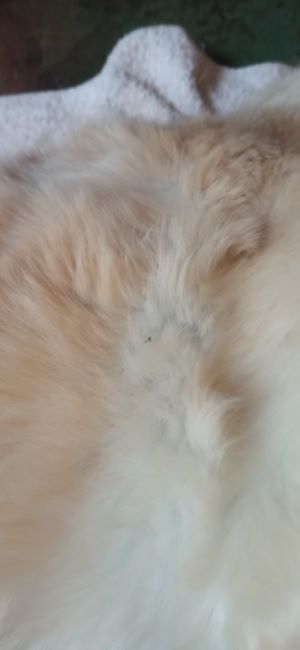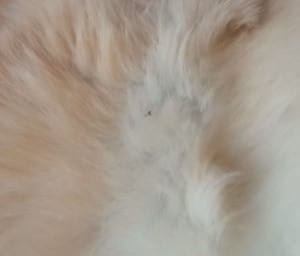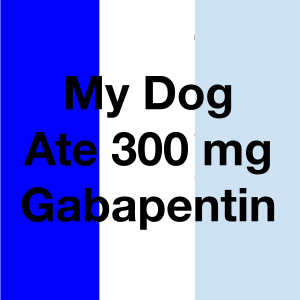
Do you notice flea dirt on your pet, but see no other signs of a flea infestation? Or maybe you’ve noticed flea dirt around your pet’s favorite spots in the house.
This can be extremely worrisome because this generally signifies a flea infestation, and of course you wouldn’t want your pet to have fleas!
The presence of flea dirt without fleas can have various causes, many of which we’ll take a closer look at in this article.
Read on to learn why you’re seeing flea dirt without also seeing fleas and what causes this to happen.
Why Do Dogs Get Fleas?

Okay, let’s start with the root of the problem.
Fleas. Disgusting tiny insects that feed on the blood of your darling pet and live in its fur.
But why do fleas target dogs in particular?
There are several reasons why dogs are easy targets for fleas.
The first is that dogs are very sociable creatures.
Generally, they love to explore the outdoors, nose around in bushes and weeds, and even interact with other dogs they meet along the way.
Because fleas can jump so far, it’s fairly easy for them to hop into your dog’s fur from nearby plants, the ground, or even other pets.
Second, the reason fleas love to target dogs specifically is because of their innate attraction to heat, carbon dioxide, and vibration.
They like warmth and movement, a lot.
A typical dog checks each of these boxes, moving around, breathing heavily, and generating heat as they do so. Your dog’s fur is basically flea heaven!
What is Flea Dirt?
So now we know why fleas like to target dogs, but what in the world is flea dirt? Brace yourself, it’s pretty disgusting.
Flea dirt is an accumulated mix of blood meal and flea waste.
It’s essentially flea feces.
Flea dirt resembles small, round specks of black that can usually be seen on your dog’s skin.
Usually, fleas prefer the rear region of your pet, and you’ll notice more of these black specks around their tail, groin area, or hind legs.
They are known to avoid the head and neck, but sometimes may still leave flea dirt there.
Why Do I See Flea Dirt but No Active Fleas?
Sometimes you may notice tiny specks of flea dirt on your pet, but no fleas to accompany them.
This can have various causes.
Your pet may have eaten them during self grooming, which is more common in cats than in dogs, or that fleas were once present but have recently jumped off and relocated elsewhere.
Remember that fleas only spend a fraction of their lives on your pet.
They only stay to feed and lay eggs, then they go on living their pitifully short lives somewhere else.
Most fleas only live an average of eight days, so this process can happen fairly quickly.
How Can I Test for Flea Dirt?
If you see dark spots on your pet’s skin but are unsure whether they are flea dirt or just normal dirt, it may be best to test for it.
A simple way to do this is to use a flea comb to lift some of the dark specks out of your pet’s fur and then place them on a lightly wetted paper towel.
In the case that it really is flea dirt, the specks will dissolve and turn a reddish-brown color. Regular old dirt will just stay brown.
If you’re having difficulty removing specks, you can also simply rub the wet paper towel across the spots to achieve the same effect.
Do Fleas and Flea Dirt Tend to Collect in One Particular Place on a Dog’s Body?
The answer to this question is yes.
As stated above, fleas prefer to nest in the rear areas of your dog.
This includes the tail and groin regions, as well as the hind legs.
They usually tend to stay away from the front end, but may be found around the ears, neck, and front legs of your dog.
It’s important to check every inch of your dog’s body when checking for the presence of fleas or flea dirt, as a flea infestation left unchecked can often become a serious situation.
Is Flea Dirt Harmful to Humans?
You might be a little freaked out by all this, right?
Well don’t worry, you’re not alone in wondering if flea dirt can harm humans.
While flea dirt alone does not pose any serious risks to human health, it can provoke allergy dermatitis in those who come into contact with it.
This is typically characterized by inflammation and itchy skin at the point of contact, but this will not happen in all cases.
You may find that it has no effect on you. Good for you!
How Do You Get Rid of Flea Dirt on Your Dog?
The first step in removing flea dirt from your dog is to give it a thorough scrub in the tub using an anti-flea shampoo.
Try to find a high-quality solution for your dog, and remember to leave it in for 5 to 10 minutes before rinsing for the full effect.
After they’ve been washed and rinsed, you’ll want to take a flea comb to their fur and comb through every inch of it.
There’s no telling how far the fleas spread their filth, and so you’ll want to be extremely thorough. This process will remove the flea dirt and kill any residual fleas that may have survived the bath.
If the problem persists, you may need to see a vet for an anti-flea medication for your dog.
This method is extremely effective and will get rid of those pesky pests in no time.
But oftentimes, a thorough cleaning routine can get rid of the problem entirely is as little as 10 days!
How Do You Get Rid of Flea Dirt in Your House?
To ensure the flea dirt and fleas are gone, you’ll want to remove all bedding and pet bedding and wash it in a special anti-flea solution. Next, expose areas hidden from sight by moving your furniture. Vacuum any areas where you see flea dirt accumulating, as the suction will remove the dirt and expose any larvae from their eggs.
If the problem persists, you’ll want to repeat these steps every other day for at least 10 days. You may want to extend the process longer depending on the persistence of the problem. It’s important to note that if you have a heavily carpeted house, you may need to steam clean after you vacuum, as fleas could still be hiding deep in the carpet threading. And you’ll need to be especially vigilant in keeping things clean if you live in a warmer climate, as fleas thrive in the heat.
Of course, if the problem is especially bad, there’s always chemical treatment. You can either try to treat your home yourself with special bug bombs for fleas that can be bought at local retailers or call an extermination company to handle the problem for you. While pricier, it’ll be a huge relief once all the fleas and their dirt is gone from your home.
What Looks Like Flea Dirt (But Isn’t)?
Let’s address a few harmless things that could easily be mistaken for flea dirt. The first one is obvious, namely, regular old dirt. That’s right, those little dark specks on your dog’s fur or skin could just be normal dirt that found its way there while your dog was playing outside. Just rub some soap and water over it, and your dog is good to go!
Maybe you’ve noticed little black specks in your dog’s fur, but upon closer inspection, have determined that they’re neither flea dirt nor regular dirt. So, what could they be? These could actually be tiny scabs, often formed by allergy dermatitis caused by fleas. These can appear in your dog’s coat and skin even long after the fleas and flea dirt have been taken care of.
The scabs may also be the result of some rough housing. If your dog likes to run into heavily wooded thickets, for example, tiny thorns or branches could be causing this deceptive scabbing to occur over time. This of course requires no treatment, as the scabs will heal on their over time. If you don’t want this to happen again, put your dog on a shorter leash!
Closing Thoughts
Fleas are really gross, and the stuff they leave behind is even grosser. Hopefully we’ve given you enough information in this article to determine what those tiny black specks on your dog’s skin are, and how to get rid of them.
Remember, a flea infestation left unchecked for too long can become a serious problem. Besides affecting your pet’s quality of life, they can affect yours too! Before you know it, your house could be crawling with these icky pests, so upon the first sign of flea dirt, it’s best to get your pet and house treated.





